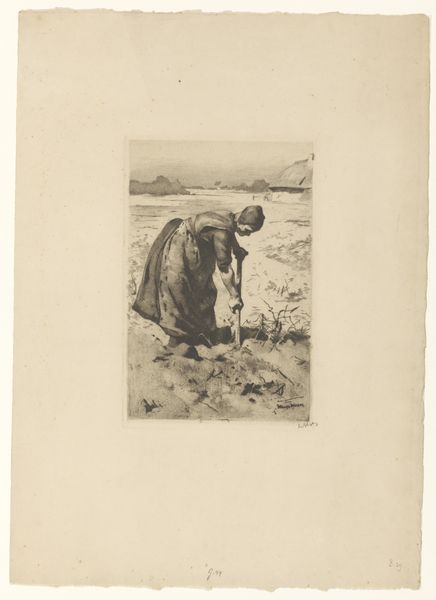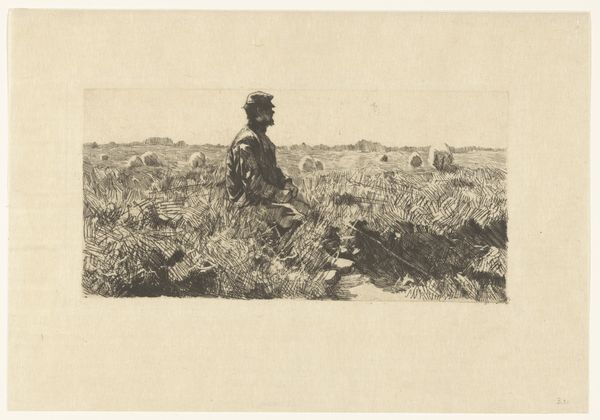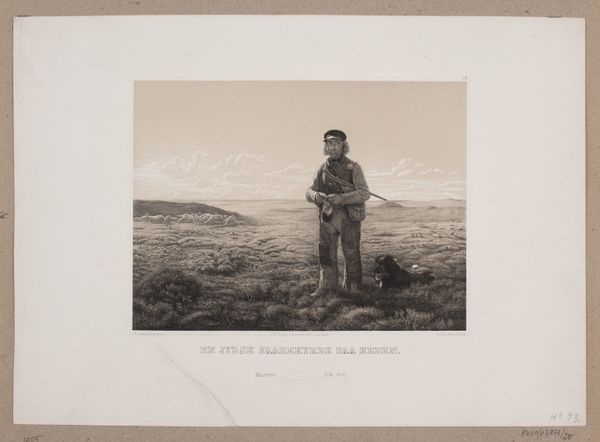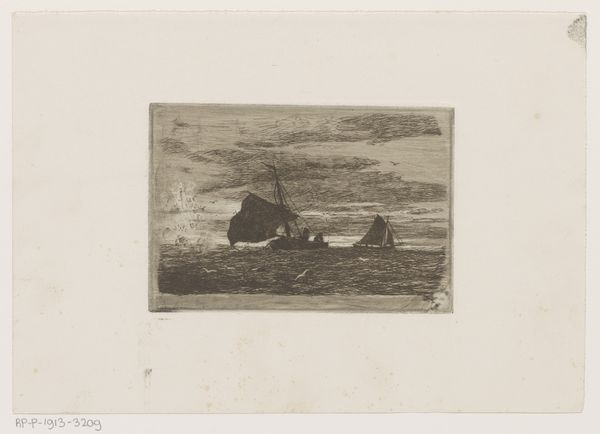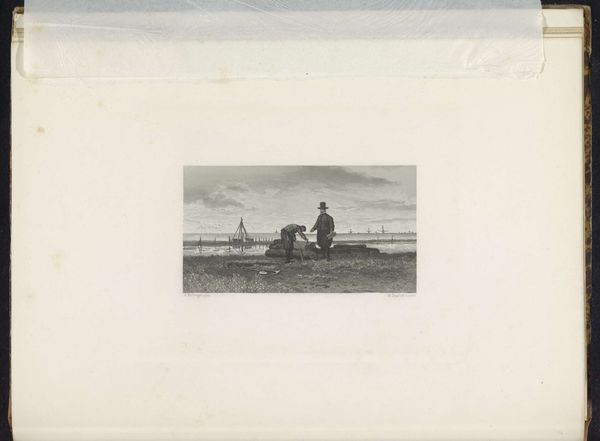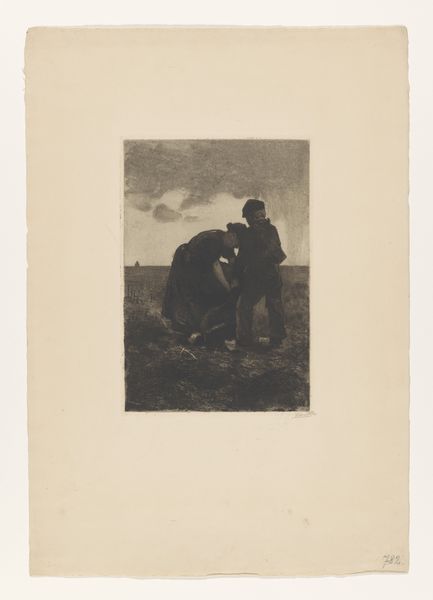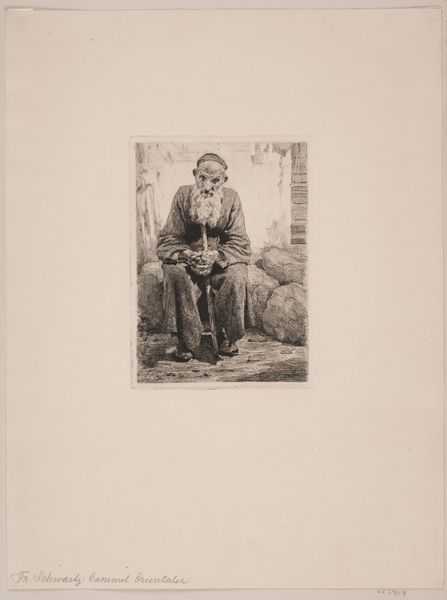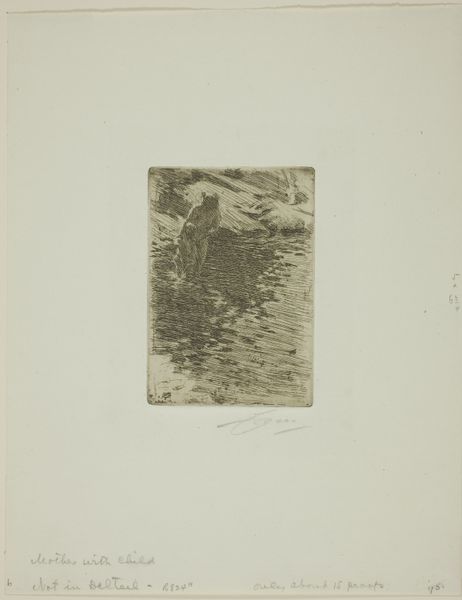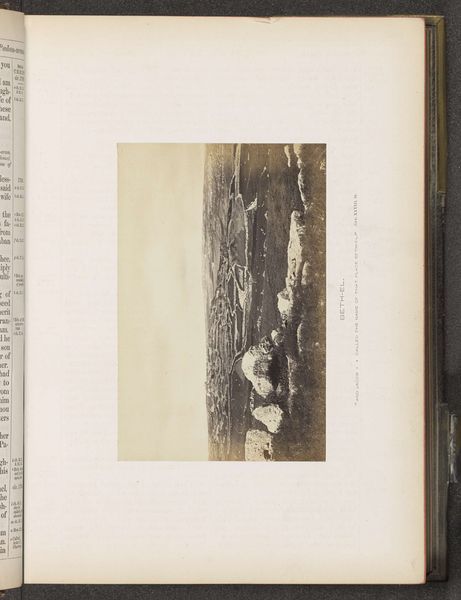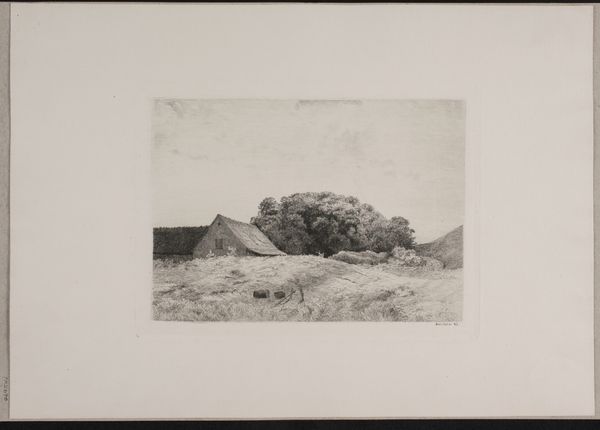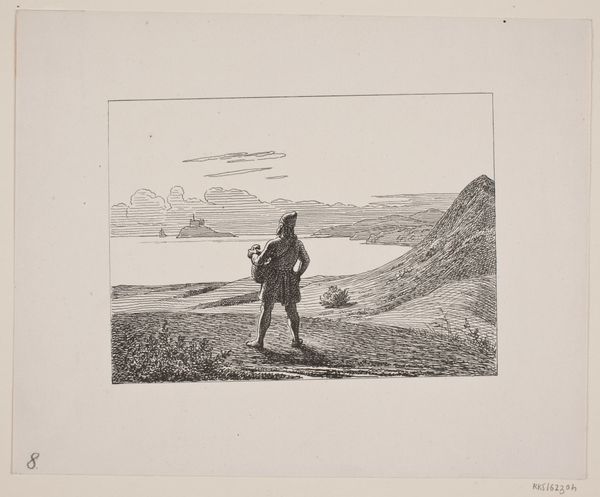
drawing, print, woodcut
#
portrait
#
drawing
# print
#
landscape
#
woodcut
#
watercolour illustration
#
realism
Dimensions: 120 mm (height) x 166 mm (width) (billedmaal)
Editor: Here we have "A Shepherd from Jutland on the Moor," a woodcut made between 1855 and 1857 by H. C. Henneberg. The landscape stretches out behind a man and his dog; it's quite desolate. What strikes you when you look at this print? Curator: I am intrigued by the quiet symbolism here. Look at the relationship between the man, his dog, and the landscape. Consider how this arrangement speaks to a sense of belonging, or perhaps isolation, within the context of Danish national identity. The heath itself carries significant weight. What does the heath evoke for you? Editor: I think of a wild place, maybe a difficult life. Why the focus on the heath and what that symbolizes in art? Curator: Precisely. During the 19th century, the heath became a symbol of the Danish national character—resilient, hardy, perhaps even a little melancholic. This image taps into those sentiments. The shepherd isn't just a shepherd; he embodies a certain ideal. Notice how the landscape dwarfs him, and consider the significance of that contrast. Editor: So, he represents more than just himself. It's a representation of Danish identity at that time. Curator: Indeed. And the dog! The dog symbolizes loyalty, but what else might it mean to have the loyal companion in that vast emptiness of a heath landscape? What cultural values do the pair communicate? Editor: Perhaps perseverance in a trying environment? I hadn't considered that. I appreciate understanding how this ordinary shepherd transforms into an emblem. Curator: It reveals how a seemingly simple image can carry complex cultural and psychological meanings, resonating with audiences far beyond its immediate subject matter.
Comments
No comments
Be the first to comment and join the conversation on the ultimate creative platform.
